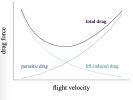Confusednewbiepilot
Filing Flight Plan
- Joined
- Jul 29, 2023
- Messages
- 3
- Display Name
Display name:
Confusednewbiepilot
Hey flyers,
As per my name, I am 7 lessons into my PPL. I suppose I will be posting here a lot.
My question is regarding the region of reverse command and what it pertains to.
I understand that the roles reverse and that pitch is for altitude and power is for airspeed.
Is this only the case during low air speed? When getting set up for slow-flight or power-off stalls, I seem to take forever to get configured and I am fighting with the airspeed and altitude once those flaps come down.
Do I need to pitch for altitude and power for air speed when getting configured for slow flight and power-off stalls?
Secondly, does trim also hold altitude as well as airspeed?
When I change altitude, my airspeed also changes (for example, I find it difficult to maintain 74 knots when putting full power in to climb)
Please don’t laugh… thank you
As per my name, I am 7 lessons into my PPL. I suppose I will be posting here a lot.
My question is regarding the region of reverse command and what it pertains to.
I understand that the roles reverse and that pitch is for altitude and power is for airspeed.
Is this only the case during low air speed? When getting set up for slow-flight or power-off stalls, I seem to take forever to get configured and I am fighting with the airspeed and altitude once those flaps come down.
Do I need to pitch for altitude and power for air speed when getting configured for slow flight and power-off stalls?
Secondly, does trim also hold altitude as well as airspeed?
When I change altitude, my airspeed also changes (for example, I find it difficult to maintain 74 knots when putting full power in to climb)
Please don’t laugh… thank you

